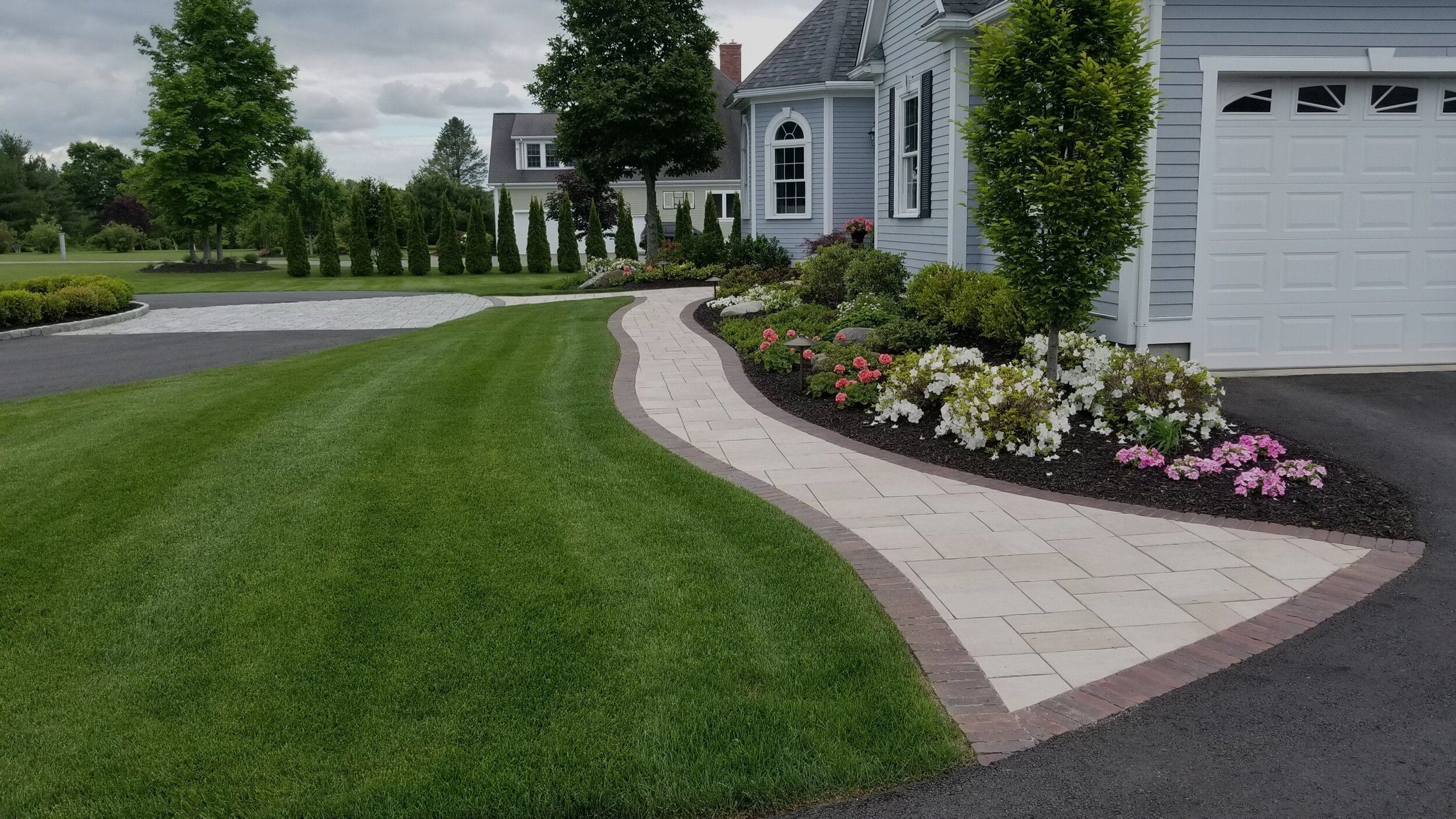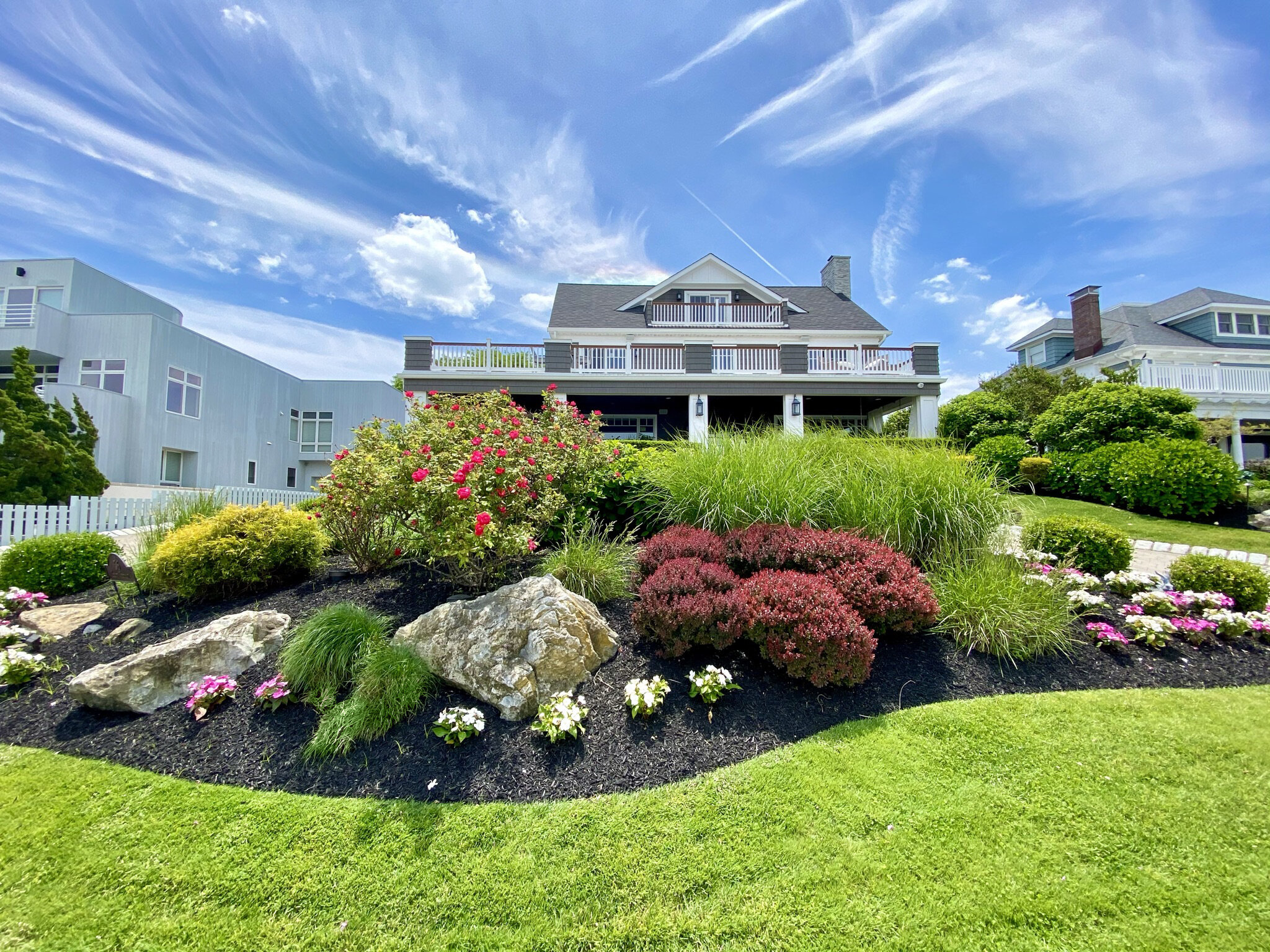Professional Landscaping Contractor Jacksonville: Changing Your Exterior Areas
Professional Landscaping Contractor Jacksonville: Changing Your Exterior Areas
Blog Article
Elevate Your Building's Visual With Sustainable Landscaping Designs and Eco-Friendly Practices

Benefits of Lasting Landscape Design
Executing sustainable landscape design practices not only conserves natural resources but additionally promotes biodiversity and boosts general environmental health. One significant benefit is the reduction of water usage with the usage of drought-resistant plants, rainfall yards, and reliable watering systems.
Moreover, sustainable landscape design can enhance dirt health by reducing making use of chemical fertilizers and chemicals, thereby developing a much healthier setting for plant development and helpful dirt organisms. This, consequently, boosts the general resilience of the landscape to endure environmental stress factors and environment adjustment influences - lawn cleanup Jacksonville. In addition, lasting landscaping techniques can draw in diverse wildlife, consisting of pollinators like and butterflies, cultivating a much more balanced and vivid ecological community within the residential property
Incorporating Indigenous Plants
To build on the benefits of lasting landscaping, a calculated emphasis on including native plants can further enhance environmental resilience and promote biodiversity within the landscape. Native plants are varieties that naturally occur in a certain location and have evolved to prosper in the regional environment, soil problems, and community. By including native plants in landscape design styles, property owners can minimize water usage, decrease the requirement for chemical pesticides and fertilizers, and sustain the local wild animals populace.
Including indigenous plants likewise aids in protecting the unique character and identification of a region's plants. These plants commonly need much less maintenance once established, making them a cost-efficient and lasting landscaping solution in the long run. In addition, indigenous plants can attract indigenous pollinators like butterflies and , adding to the overall health of the ecological community.
When choosing native plants for landscaping jobs, it is vital to choose types that are fit to the specific ecological problems of the website. Consulting with herb gardens or local nurseries can offer valuable support on selecting the ideal native plants for a particular location. By incorporating indigenous plants into landscape design layouts, building proprietors can develop lovely, lasting outdoor spaces that profit both the area and the environment.

Water Preservation Techniques
Efficient irrigation methods play a vital duty in lasting landscaping practices, guaranteeing ideal water conservation initiatives in outside areas. Applying techniques such as drip irrigation, rain harvesting, and clever irrigation systems can significantly reduce water waste while keeping a healthy and balanced landscape. Trickle irrigation supplies water directly to the roots of plants, minimizing dissipation and runoff. Rainwater collecting includes accumulating rain from roofings and storing it for later usage in watering, reducing the dependence on community water resources. Smart watering systems make use of climate data and dirt dampness levels to readjust sprinkling schedules, protecting against overwatering and promoting water effectiveness.
Along with innovative watering techniques, xeriscaping is another water-saving landscape design technique that concentrates on making use of drought-resistant plants, mulch, and effective watering to produce a low-water landscape style - landscaping company Jacksonville. By selecting native plants that are well-suited to the neighborhood climate and soil problems, residential property proprietors can lower the requirement for extreme watering, eventually preserving water and advertising a lasting outdoor environment
Eco-Friendly Hardscaping Ideas
Enhancing exterior areas with environment-friendly hardscaping landscaping company Jacksonville functions can contribute dramatically to sustainable landscaping practices. When thinking about hardscaping components, choose products like redeemed wood, recycled concrete, or all-natural stone to lessen environmental effect. These products not just include an one-of-a-kind aesthetic attract your exterior space yet additionally reduce the demand for new resources extraction.
Applying absorptive paving options such as crushed rock or permeable concrete can aid reduce water overflow and advertise groundwater recharge. These alternatives enable rain to permeate right into the ground, avoiding erosion and reducing the problem on stormwater systems.
Integrating native plants into hardscaping designs can further enhance eco-friendliness by sustaining local wild animals and lowering the requirement for excessive watering or chemical treatments. By integrating green wall surfaces or upright yards, you can present a lot more plant life right into city setups, improving air high quality and biodiversity.
Integrating energy-efficient lights, such as solar-powered LEDs, into hardscaping styles can minimize power intake and reduced your home's carbon impact. Focusing on eco-friendly hardscaping concepts not only enhances the charm of your exterior more area yet also demonstrates a commitment to environmental stewardship.
Upkeep Tips for Lasting Landscapes

On a regular basis trim plants to advertise healthy and balanced development and prevent overgrowth that can cause pest diseases or infestations. Usage natural fertilizers to nourish the dirt and plants without damaging chemicals that can seep into the environment. For hardscaping components, such as permeable pavers or stone pathways, consistently clean them to avoid debris build-up and keep their capability. By remaining aggressive with maintenance jobs, you can preserve the appeal and sustainability of your landscape for years to find.
Verdict
To conclude, lasting landscaping practices use many benefits for home proprietors, from improving the aesthetic allure of the environments to advertising environmental conservation. By integrating indigenous plants, executing water conservation methods, and using green hardscaping ideas, building owners can produce beautiful landscapes that are also environmentally responsible. With correct upkeep, lasting landscapes can add and prosper to a healthier environment for both humans and wildlife.
In addition, lasting landscape design can improve dirt health and wellness by lessening the use of chemical fertilizers and pesticides, thus developing a much healthier environment for plant development and advantageous soil organisms.To build upon the benefits of sustainable landscaping, a strategic emphasis on including native plants can additionally enhance eco-friendly Go Here strength and promote biodiversity within the landscape. By consisting of indigenous plants in landscape design styles, residential or commercial property owners can lower water use, decrease the requirement for chemical pesticides and plant foods, and support the regional wildlife population.
These plants frequently need less maintenance once developed, making them a lasting and cost-efficient landscape design remedy in the lengthy run. By integrating native plants right into landscaping layouts, property proprietors can produce attractive, sustainable outdoor rooms that benefit both the atmosphere and the area.
Report this page